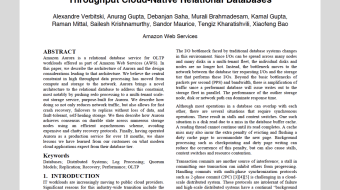Customer-obsessed science


Research areas
-
September 26, 2025To transform scientific domains, foundation models will require physical-constraint satisfaction, uncertainty quantification, and specialized forecasting techniques that overcome data scarcity while maintaining scientific rigor.
-
Featured news
-
2024Visual-Language Alignment (VLA) has gained a lot of attention since CLIP’s groundbreaking work. Although CLIP performs well, the typical direct latent feature alignment lacks clarity in its representation and similarity scores. On the other hand, lexical representation, a vector whose element represents the similarity between the sample and a word from the vocabulary, is a natural sparse representation
-
Amazon Technical Reports2024We present Amazon Nova, a new generation of state-of-the-art foundation models that deliver frontier intelligence and industry-leading price performance. Amazon Nova Pro is a highly capable multimodal model with the best combination of accuracy, speed, and cost for a wide range of tasks. Amazon Nova Lite is a low-cost multimodal model that is lightning fast for processing images, video, documents and text
-
IEEE Big Data 20242024Getting large language models (LLMs) to perform well on the downstream tasks requires pre-training over trillions of tokens. This typically demands a large number of powerful computational devices in addition to a stable distributed training framework to accelerate the training. The growing number of applications leveraging AI/ML led to a scarcity of the expensive conventional accelerators (such as GPUs
-
Environmental Research: Infrastructure and Sustainability2024Battery electric trucks (BETs) are the most promising option for fast and large-scale CO2 emission reduction in road freight transport. Yet, the limited range and longer charging times compared to diesel trucks make long-haul BET applications challenging, so a comprehensive fast charging network for BETs is required. However, little is known about optimal truck charging locations for long-haul trucking
-
2024We describe a family of architectures to support transductive inference by allowing memory to grow to a finite but a-priori unknown bound while making efficient use of finite resources for inference. Current architectures use such resources to represent data either eidetically over a finite span (“context” in Transformers), or fading over an infinite span (in State Space Models, or SSMs). Recent hybrid
Collaborations
View allWhether you're a faculty member or student, there are number of ways you can engage with Amazon.
View all















































